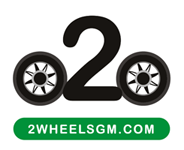New to motorcycling? Let’s get ready!
Spring often sees new riders take to the roads for the first time on a moped, scooter or motorbike.
If that’s you, welcome to the motorcycling community; we’re sure you’ll love the freedom and fun that riding a powered bike can bring.
But there’s a lot to learn and get to grips with, so here at Two Wheels GM we’re running a new series of articles to help new riders understand what’s involved, what they need to know and what to do next. We’re here to help newcomers get the most from their bikes while staying safe.
Last time we looked at basics of road signs and the Highway Code; this time, we need to get the documents ready.
What we need before we ride
Before we ride, every biker needs to tax their bike, have insurance in place and, if it’s more than three years old, make sure it has an MOT.
Be warned; don’t skip on these. The authorities now impound and scrap bikes that don’t have the right documentation in place.
Every rider needs at least CBT
CBT stands for Compulsory Basic Training. It’s a one-day course that’s a legal requirement before we hit the road.
CBT is a single day of training that costs around £150; after completion we get to ride a powered bike up to 125cc on L plates for two years.
It’s so important to have taken CBT before we hit the roads that we can’t even ride to the training venue; the course organiser will pick participants and their bikes up and take them to the site.
The course itself is great. After a quick eyesight check and some really useful advice on bike safety and maintenance, riders are put through their paces on an off-road site before heading out on the road under the watchful eye of the experienced trainer.
At the end of the day participants receive their CBT - and that means two years riding on L-plates or, if we want, it’s the first step to take a test on a bigger bike (known as the A1, A2 or A tests).
If you’re not sure what to expect, check out Transport for London’s brilliant Preparing for your CBT online training course.
It’s a great way to pick up some key tips on bike handling, reducing risk, road positioning and hazard spotting. It can be found here.
And it’s open to everyone, not just riders in London, so check it out now.
Next: Top tips on gear, plus safety advice for the first ride
